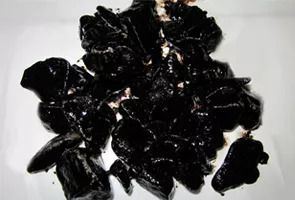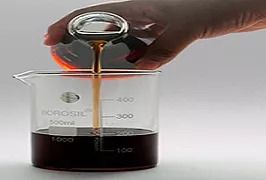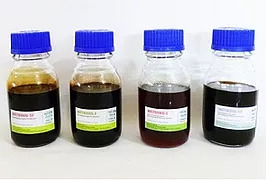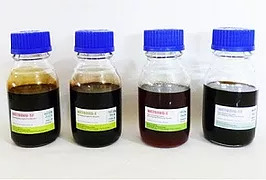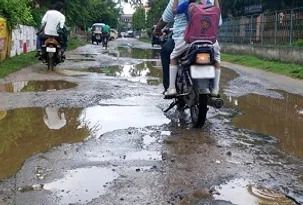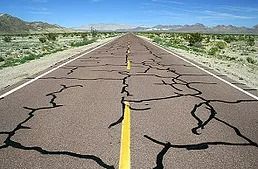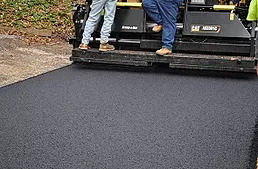Industrial Estate, Muzaffarnagar, Uttar Pradesh
- GST NO. : 09AGSPA6716B1ZI
Conventional Anti-stripping Agents
The Premature failure of Bituminous Pavements due to action of water is the most common problem and single biggest factor causing early pavement distress. The most important reason contributing to this condition is improper adhesion between bitumen and commonly used aggregates, salt contamination of water/soil and water drainage problems. Majority of aggregate show high stripping value (as high as 70%) and most of them fail miserably in bitumen adhesion properties. These conditions prevail across continents, thus all around the world, anti-stripping agents are recommended and used to extend pavement life.
| Business Type | Manufacturer, Exporter |
Preferred Buyer From
| Location | Anywhere in India |
Bitumen is the semisolid material obtained from distillation of crude petroleum oil. It is largely made up of hydrocarbons with low polarity hence it has a very low reactive index and shows little chemical affinity for aggregate, whereas most of the aggregates are ionic so they have high affinity for water. This shows that bitumen can be easily displaced by water, leading to separation of bitumen layer from aggregate.
Being the distillate of crude oil, bitumen contains a number of organic substances. Presence of naphthanic acid and other carboxylic acids make the Bitumen slightly acidic, so with siliceous aggregates repulsive forces makes the bonding inefficient. This may lead to the problem of stripping and failure of bituminous pavements.
There is only one cause of stripping: water getting between a bitumen film and the aggregate surface, replacing the bitumen as the coating of the aggregate. Practically the adhesion between bitumen and aggregate depends on the source of the bitumen and the chemistry of the aggregate surface. The Aggregates can be of an "acidic" type with surface showing negative charge, or "basic" with surfaces showing positive charge. Acidic aggregates include high silica content rocks, while basic aggregates include carbonate mixes. Bitumens, especially those with high acid value, show a tendency to become negatively charged resulting in adhesion problems (particularly with acidic aggregates). Although water damage is highest in wet climates and high traffic roads show such damage most quickly, but this problem can occur in all climates.
| Business Type | Manufacturer, Exporter |
Preferred Buyer From
| Location | Anywhere in India |
The chemical affinity between bitumen and aggregate can be improved by the addition of very small quantities of chemicals which change the nature of the aggregate or the bitumen to have more affinity for the other.
These chemicals are known as "Anti-stripping Agents" "Anti-stripping Additive" or "adhesion promoters".
Since the stability of bituminous pavement largely depends on adhesion between bitumen and aggregates, the ionic nature of aggregate is an important factor explaining the problem of stripping that differ for different type of aggregates.
This also explains non-formation of stable bond in bituminous pavement construction. (refer IS-6241:1971 "Method of test for determination of stripping value of road aggregates, ASTM D3625 "The Boiling Water Test"). The widely accepted class of Anti-stripping agents belong to Fatty Polyamine group of chemicals where even in a very small dose they provide :
- Active and passive adhesion between Bitumen and the aggregates,
- Being surface active agents they provide bituminous wetting action (in some cases, reduced requirement of Bitumen), and prolongs the pavement life by slowing the ageing process.
| Business Type | Manufacturer, Exporter |
Preferred Buyer From
| Location | Anywhere in India |
The problem of stripping can be effectively minimized using "DERBO" and "WETBOND" range of anti-stripping agents. Since they are made from Polymeric amines, the amine group of "DERBO" and "WETBOND" anti-stripping agents reacts with acidic aggregates and makes the aggregate surface hydrophobic (repulsive to water). Further lipophilic (oil loving) Fatty chain remains well suspended in bitumen to form a bridge between bitumen and aggregates. This prevents stripping even in presence of water.
Amine based "DERBO" and "WETBOND" Anti-stripping agents also act by changing the interfacial tension between Bitumen and aggregates and strengthening the bonding for long term durability.
In construction of bituminous pavements, the aggregates are used in two ways e.g. in coated form (Hot Mix etc.) and uncoated form (spraying work etc.). When used in proper dose, "DERBO" and "WETBOND" are equally effective in both the applications. In coated form they prevents stripping even when coated aggregates are submerged in water and in uncoated form they provides active adhesion of bitumen even with wet aggregates.
Dose of DERBO and WETBOND :
- Dosing of DERBO and WETBOND can be done at different stages of mixing and application. An automatic dosing system can be installed in hot mix plant, however an easier way is to add pre-determined quantity in bitumen storage tank before unloading the bitumen from bulk tanker. Alternatively it can be mixed in stored bitumen by gentle stirring for 15 minutes by a mechanical or manual process.
- The required dose of each grade will be different depending on type of bitumen used, type of aggregates and type of surfacing. (The dose can be estimated by some simple tests covered under testing page)
| Business Type | Manufacturer, Exporter |
| Type | Amine |
Preferred Buyer From
| Location | Anywhere in India |
Since this is well established that Bituminous Pavements suffer from water damage, this damage can result in rutting, shoving, ravelling, bleeding, cracking and formation of potholes. More importantly this can also lead to loss of chippings from surface dressings (chip-sealing) and freeze-thaw damage in snow-bound area. The reason for this problem on a micro scale is loss of adhesion between the bitumen and the aggregates. There are very few types of aggregate which can resist the action of water, because the water can enter the pavement structure in a number of ways:
- Wet bitumen-aggregate interface on aggregate not dried properly.
- Rain water seepage through shoulders, cracks or pores, ground / sub-surface water exhibiting a hydrostatic action (moving inside bituminous layer).
- Capillary water sucked and expelled out from the top or subgrade.
- Water vapors formed in the subgrade due to hot weather.
The factors contributing to moisture damage of these pavements includes :
- Siliceous type and dusty aggregates.
- Presence of clay on aggregate surface.
- Bitumen with higher acidity profile.
- Mix designs with less binder and open grading of aggregates.
- Material with higher voids due to improper compaction.
- Inadequate drainage.
- Presence of water vapors between layers.
| Business Type | Manufacturer, Exporter |
Preferred Buyer From
| Location | Anywhere in India |
Although the use of Anti-stripping Agents can not eliminate the pavement damage problems caused by poor pavement design, bad construction techniques or poor materials, but mostly helps to minimize their effect.
The twin aspects of pavement stability are :
- Bituminous wetting: whether Bitumen properly coats the aggregate surface or not?
- Resistance to stripping: whether Bitumen sticks to the aggregate for lifetime of the road or not?
Poor wetting can be avoided by the modification of the bitumen properties or by the modification of the aggregate surface. The aggregates can be pre-coated with kerosene or water solution of Anti-stripping Agent to make the surface more receptive to the bitumen. But more practical approach is to modify the binder properties by the adding Anti-stripping Agent additives also known as "adhesion promoters", "wetting agents" or "Anti-stripping Compounds"
| Business Type | Manufacturer, Exporter |
Preferred Buyer From
| Location | Anywhere in India |
Our products are tested from :
- Central Road Research Institute, New Delhi.
- IIT - Roorkee.
- Indian Institute of Petroleum, Dehradun
- CEG Test Lab & Research Center, Jaipur
- Delhi Test House, Delhi
- Shriram Institute of Industrial Research, Delhi
- U.P.P.W.D. Research Institute, Lucknow. and many more...
Common tests for on-site evaluation of the efficacy of Anti-stripping Agents are :
- Coating Retention Test : A test similar to stripping test where the blends of different doses of Anti-stripping Agents (0.0, 0.2, 0.4, 0.6, 0.8 and 1.0%) in hot Bitumen are prepared and 10 gms of each blend is mixed with 200 gm hot aggregates and placed in a beaker to cool. Each beaker is then filled with distilled water to submerge the aggregates and placed in water bath maintained at 40°C for 24 hrs. After 24 hrs, each beaker is visually inspected to determine the percentage of Anti-stripping Agent sufficient to retain more than 95% coating.
- Under Water Coating Test : Different blends of Anti-stripping Agents (0.0, 0.2, 0.4, 0.6, 0.8 and 1.0%) are made in bitumen cutback MC-30. In a 1-litre capacity tin container, 200 gm aggregate are taken and 750 ml of warm distilled water (at 40°C) is poured inside. On top of water, 10 gm of bitumen-antistripping blend is poured. The container is then capped and shaken vigorously for 2 minutes. Then water is drained out and aggregates are transferred on white paper. Percentage of area of aggregates coated with bitumen inside water is then visually estimated.
- Boiling Test : Blends of different doses of Anti-stripping Agents (0.0, 0.2, 0.4, 0.6, 0.8 and 1.0%) in Bitumen are prepared and each mixed in 10 gm quantity with 200gm aggregates and put in a beaker to cool. Each beaker is then filled with distilled water to submerge the aggregates and boiled vigorously for 10 min. After 10 min water is drained and the aggregates are transferred to white paper where retained coating is visually estimated.
- Retained Marshall Stability : Test specimens are prepared with 5% Bitumen/ Bitumen-Antistripping Agent blends. One group is placed in water at 60°C for 40 min and tested for Marshall Stability. The other identical group is immersed in water at 60°C for 24 hrs. and then tested for Marshall Stability. The Retained strength is then calculated by determining the percentage of Retained Marshall Stability.
Applications :
- Surface Dressing (Chip-Sealing) : Surface dressing (chip sealing) involves spreading uncoated chippings over a sprayed layer of Bitumen followed by rolling. The applied Bitumen layer cools rapidly leading to wetting problems which become worse by wet and dusty aggregates. In this case an active adhesion is required and typically 0.5-1.0 % DERBO is added to the bitumen. Alternatively the chippings can be pre-coated with a mix of diluted binder and DERBO or a diluted water solution of DERBO can be sprayed on chippings before spreading. Field studies have demonstrated that the use of Anti-stripping Agents in surface dressing provides resistance to early rain.
- Hot-Mix Surfacing : Hot Mix surfacing is the most efficient and preferred road construction technology. This however requires stringent control of performance features like stripping which most of the times shortens the pavement features and life. This problem can be minimized by using small doses of DERBO that also results in Bitumen saving and good saving in maintenance.
- Maintenance : When repair works like pot-hole filling, crack sealing, rutting etc are carried out in rainy season or where possibility of moisture damage is high, a little addition of Anti-stripping Agent ensure stable repairs.
- Hot Recycling : When a pavement is subjected to hot-recycling, if partly coated surfaces are observed in the reclaimed mix, to provide easy wetting, better water resistance and better compaction, Anti-stripping Agent should be used.
- Emulsions : Cationic bitumen emulsions provide good adhesion in road applications but sometimes an additional water resistance is required. Anti-stripping Agent can be added to the binder before emulsification. Anionic emulsions generally provide poor adhesion to siliceous (acidic) aggregates. Adhesion of anionic emulsions can also be improved by adding Anti-stripping Agent to the binder before emulsification, or to the finished emulsion.
- Precoated Chippings : When chippings are lightly coated with bitumen, kerosene or diesel to ensure adhesion in surface dressing or when rolled into hot rolled bituminous surfaces to improve skid resistance, Anti-stripping Agent can be added to the coating material to ensure good adhesion.
- Prime Coats : Where cutbacks are used for priming and dust control during construction, since road base retains moisture and remains cold, Anti-stripping Agent should be added to the prime coat to ensure active adhesion and protection from moisture.
Packings :
- DERBO-101-P5 Solid Flakes in 25 Kg. LDPE Lined Paper Coated HDPE Bags.
- DERBO-401 Liquid in 180 Kg. UN Certified MS Drums.
- WETBOND-SP Liquid in 190 Kg. UN Certified MS Drums.
- WETBOND-E Liquid in 200 Kg. MS Drums / 100 Kg HDPE Mini-drums.
References :
Serious failures can occur very shortly after laying surface treatments on roads carrying medium or heavy traffic if wet weather occurs within 24 hours after completion of work. Fast, tense traffic may flying aggregates off the roads exposing a layer of binder that may be slick. This problem has been solved by use of surface active chemicals - cationic material consisting of long-chain hydrocarbon soluble in tar and bitumen and has positively charged ions. (Recent Research on some problems in construction and maintenance of roads, By: Lee A.R., Roads and road construction Vol:36 N0.424).
It is recommended that an adhesion agent be added to binder (unless previously added by binder manufacturer) if unsettled weather is imminent and uncoated chippings are being used. (Road Note 39, Second Edition, Recommendations for road surface dressing, Transport and road research laboratory, Department of Transport, London)
Even if the construction is done during dry weather, there are possibilities of stripping taking place subsequently owing to rainfall. Some aggregates resist the action of water better than others. In some cases by adding some surface active agent, this resistance is increased. (Adhesion between Bitumenous Binders and Road Stones, By C.G. Swaminathan & K.P. Naire, Road Research paper no.14, Central Road Research Institute, New Delhi and IRC Journal Vol.XXII.2)
The Delhi quartzite aggregates used in bituminous macadam construction which show practically no stripping in laboratory tests undergo stripping in the field. Incorporation of anti-stripping agent in all open graded bituminous mixes prepared with Delhi quartzite aggregates is warranted. (Highway Research Record No.11, Road Researches in India).
The performance of test-section laid with bitumen with antistripping agent was better than that of those constructed with bitumen without anti-stripping agent. (Highway Research Record No.11, Road Researches in India)
Adhesion improver prevents moisture damage and slows ageing process in bituminous mixes. (The Shell Bitumen Handbook Fifth Edition, Evaluation of Asphalt Mixtures using the Texas freeze-thaw pedestal test By: Kennedy TW, FL Roberts and KW Lee)
Use of anti-stripping agents increases cost of construction by a small margin but would prove beneficial in long run due to increased durability of bituminous surfacing and would reduce cost of maintenance. (Highway Research Record No.10, Road Researches in India)
Anti-stripping agents improves bitumen coating property of the aggregates. (Highway Research Record No.10, Page 25,Road Researches in India)
As a precautionary measure Anti-Stripping Agent should be added to the bitumen at the time of construction. (Code of practice for Maintenance of Bituminous surfaces of Highways, Page 24, IRC-82:1982)
This product has also been found to be of great help in surface treating the fresh WBM roads for immediate opening of traffic. (Fundaments of adhesion and role of adhesion agents in bituminous road construction, Indian Highways, IRC, NewDelhi)
Many states require Anti-stripping agents as a safety factor in open mixes and as a requirement for dense mixes made with aggregates which show stripping tendencies. Since preventing raveling would be advantageous to both the state and the traveling public, a good case could be made for the state to pay for Anti-Stripping agents used in late season work. The 15-20% per tone of mix incurred by using Anti-stripping agents may be good insurance in late season work. (A study of Road Aggregates for use in Black Top Surfacings, By Sh. K.P. Nair & B.S. Gogte, Paper No.51, Central Road Research Institute, NewDelhi)


